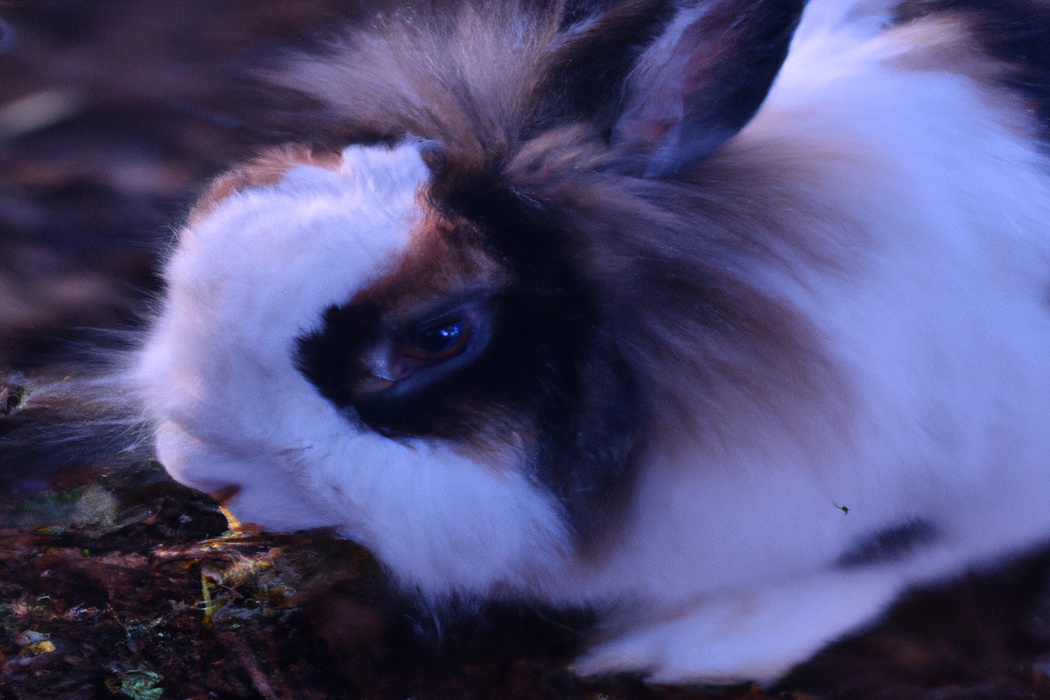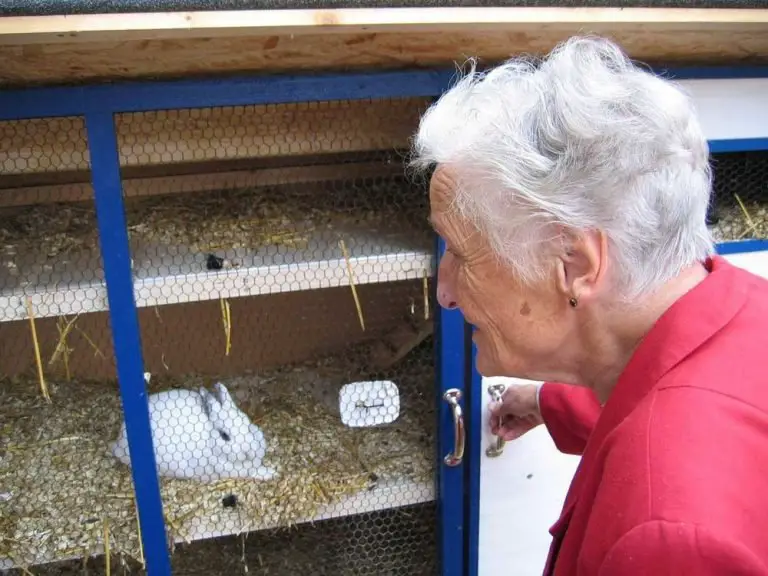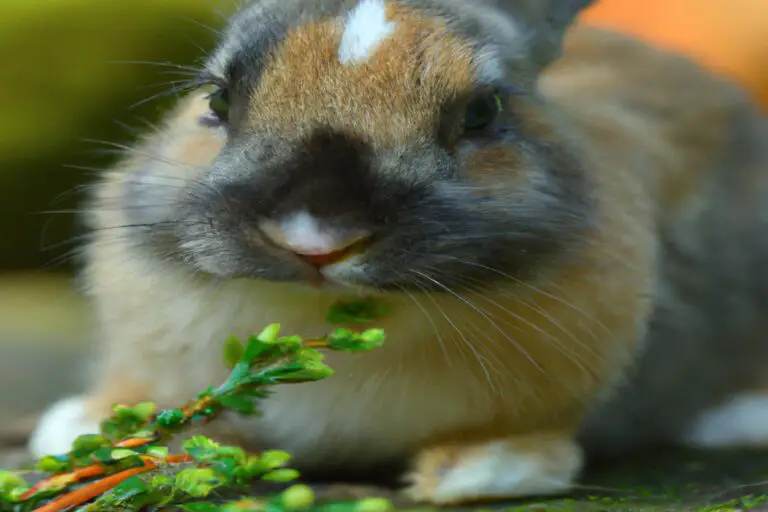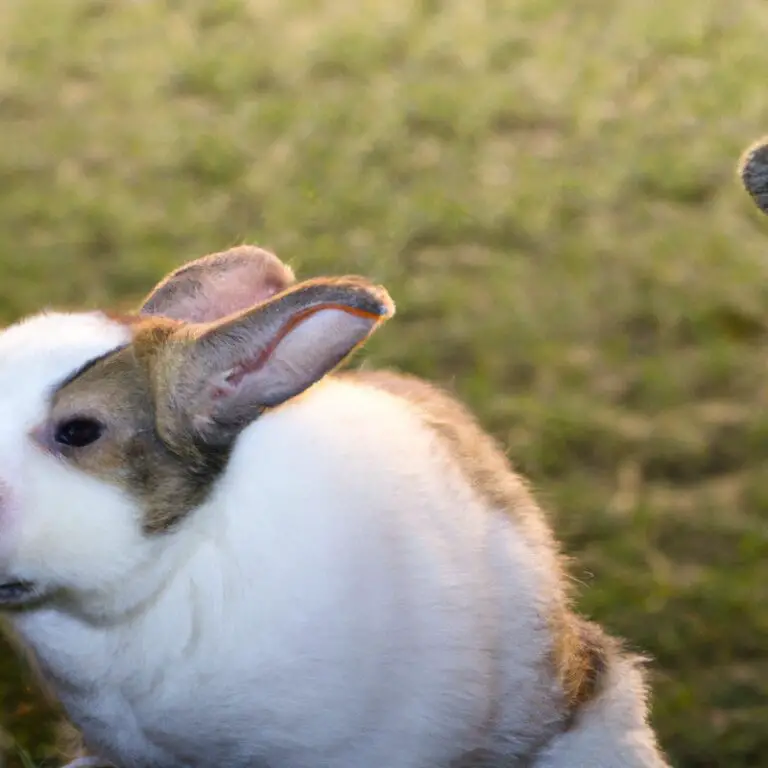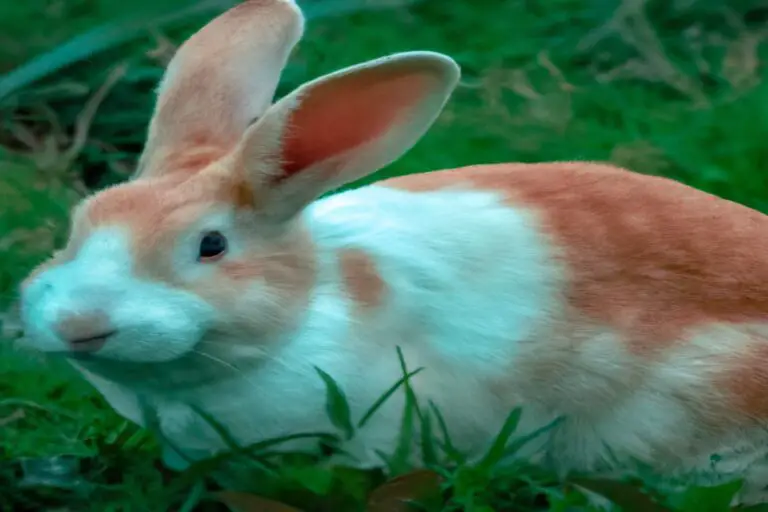What Does a Rabbit In Shock Look Like – Mystery Unraveled
Key Takeaways:
- A rabbit in shock may display symptoms such as trembling and freezing.
- It may also exhibit widened eyes and a rapid heart rate.
- In serious cases of shock, a rabbit may appear limp or unconscious.
- Seeking immediate veterinary assistance is crucial when you suspect a rabbit is in shock.
Have you ever wondered what a rabbit in shock looks like?
It’s crucial for pet owners to be familiar with the signs of distress in their furry friends.
In this blog article, we will explore the behavior and body language of rabbits, helping you differentiate between normal behavior and potential distress.
We will also delve into the physical and behavioral symptoms presented by rabbits in shock, and provide you with practical steps to assess the situation and administer emergency first aid.
Additionally, we will discuss preventive measures to ensure the well-being of your beloved bunny.
So, let’s jump right in and discover what happens when a rabbit is in shock!
| Rabbit in Shock |
|---|
| Appearance |
| Pale or blue gums |
| Rapid breathing |
| Cold extremities |
| Hunched or crouched posture |
| Unresponsiveness or reduced movement |
| Behavior |
| Lethargy or depression |
| Loss of appetite |
| Trembling or shaking |
| Weakness or inability to stand |
| Other Signs |
| Rapid heart rate |
| Low body temperature |
| Sweating or excessive salivation |
| Fainting or collapse |
Understanding Rabbit Behavior and Signs of Distress
Rabbits have their own unique behaviors and body language that can give clues about their well-being and distress.
Normal Rabbit Behavior and Body Language
Rabbits have their own unique ways of communicating and showing their emotions. They often use body language to express themselves.
Here are some common behaviors you may observe in a normal, happy rabbit:
- Ears: When a rabbit’s ears are upright and relaxed, it indicates a sense of curiosity and contentment.
- Body posture: A relaxed rabbit will have a slightly rounded back and sit with their hind legs tucked under their body.
- Grooming: Rabbits are known for their meticulous grooming habits, which they do to keep themselves clean and comfortable.
- Binkying: Binkying is when a rabbit jumps in the air and twists its body. This is a sign of joy and happiness.
- Socializing: Rabbits are social animals and enjoy spending time with their human companions or with other rabbits.
It’s important to become familiar with your rabbit’s normal behavior so that you can identify any changes that may indicate distress or illness. By paying attention to their body language, you can better understand your furry friend’s needs and provide them with a happy and healthy environment.

Identifying Signs of Rabbit Distress
Rabbits in distress may exhibit several signs such as thumping their hind legs, trembling, hiding or seeking shelter, growling or hissing, or excessive chewing or digging. They may also display unusual behavior like aggression, biting, or refusing social interaction.
Physical signs can include rapid breathing, hunched posture, tucked tail, dilated eyes, or excessive grooming.
If you notice any of these signs in your rabbit, it is important to assess the situation and seek veterinary advice if necessary.

Recognizing a Rabbit in Shock
Recognizing a Rabbit in Shock: When a rabbit is in shock, there are certain signs to look out for. These may include rapid breathing, a weak or irregular pulse, dilated pupils, and poor response to stimuli.
The rabbit may also exhibit limpness, a lowered body temperature, or appear non-responsive.
If you notice any of these symptoms in your rabbit, it is important to seek immediate veterinary attention. Shock can be a serious condition that requires prompt and appropriate treatment to ensure the rabbit’s well-being.
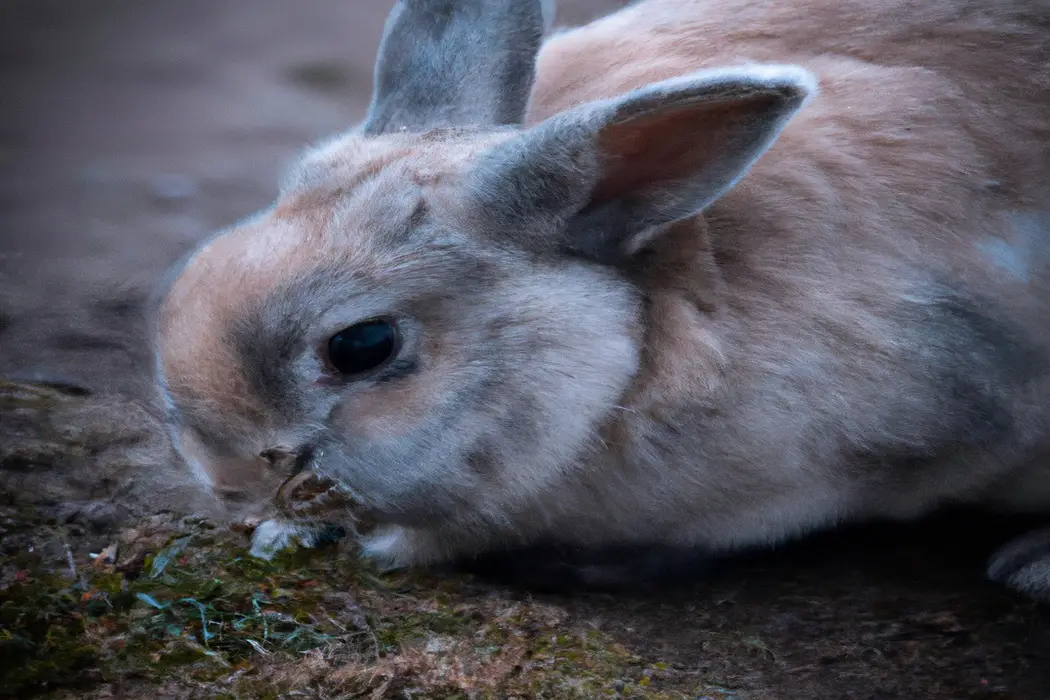
Rabbit Body Language: Normal vs Distressed
When a rabbit is in distress or discomfort, their normal body language and expressions will vary significantly.
Pay attention to these signs to understand how your rabbit is feeling.
Normal Rabbit Body Language and Expressions
Rabbits have their own unique ways of communicating through body language and expressions. Here are some normal behaviors you might observe in a happy and content rabbit:
- Ears: When a rabbit is relaxed and content, their ears will be perked up, facing forward. This shows that they are alert and engaged with their surroundings.
- Eyes: A rabbit’s eyes should be bright and clear. They may blink slowly as a sign of relaxation and trust.
- Body posture: A relaxed rabbit will have a neutral body posture, with their body stretched out comfortably. They may lie on their side, or sit up with their hind legs tucked under them.
- Grooming: Rabbits are meticulous groomers, and will often be seen cleaning themselves. This is a sign of contentment and feeling secure in their environment.
- Binky: One of the most joyful expressions a rabbit can show is a binky. A binky is when a rabbit hops and twists mid-air, usually accompanied by running in circles. This is a clear indication of a happy and playful bunny.
It’s important to familiarize yourself with your rabbit’s normal body language so that you can detect any changes or signs of distress. Understanding their natural expressions will help you communicate and bond with your furry friend.
Indicators of Rabbit Distress or Discomfort
Indicators of Rabbit Distress or Discomfort can include:
- Increased heart rate and rapid breathing.
- Restlessness or hyperactivity, such as excessive digging or chewing.
- Lack of appetite or refusing food.
- Hiding or cowering in a corner.
- Aggressive behavior, such as biting or scratching.
- Weight loss or poor grooming habits.
- Changes in fecal matter, like diarrhea or small, misshapen pellets.
- Excessive sneezing or wheezing.
- Limping or difficulty moving.
These signs may indicate that your rabbit is experiencing distress or discomfort, and it’s important to address the underlying cause as soon as possible.
Key Differences in Rabbit Behavior during Shock
When a rabbit is in shock, there are some key differences in their behavior that you might notice. These include:
- Rapid breathing and shallow panting: A shocked rabbit may breathe rapidly and pant in order to take in more oxygen.
- Inactive or frozen posture: Shocked rabbits may become still and freeze in place as a response to the stress or fear they are experiencing.
- Lack of response to stimuli: A rabbit in shock may not react to their surroundings or to external stimuli, such as noise or touch.
- Increased heart rate: You may be able to feel a rapid heartbeat if you place your hand gently on a shocked rabbit’s chest.
- Loss of appetite: Shock can cause rabbits to lose interest in food and refuse to eat.
It’s important to remember that shock can be a serious condition for rabbits, and it’s crucial to seek veterinary care if you suspect your rabbit is in shock.
Physical and Behavioral Symptoms of Shock in Rabbits
A rabbit in shock may exhibit physical signs such as rapid breathing and a weak or rapid heartbeat, as well as behavioral changes like decreased mobility and loss of appetite.
Other symptoms of shock in rabbits can include pale mucous membranes, cool extremities, and dilated pupils.
Physical Signs of Shock in Rabbits
If a rabbit is in shock, you may notice several physical signs.
These can include pale or bluish gums, cold or clammy skin, rapid or shallow breathing, and a weak or rapid pulse.
The rabbit may also exhibit lethargy or appear unresponsive.
It’s important to seek immediate veterinary attention if you suspect your rabbit is in shock, as this is a serious condition that requires prompt treatment.
Behavioral Changes during Rabbit Shock
During rabbit shock, you may notice several behavioral changes in your rabbit.
These can include immobility, lethargy, decreased appetite, withdrawal, increased heart rate, and breathing difficulties.
Rabbits may also exhibit abnormal behaviors like teeth grinding and excessive grooming.
It’s important to remember that every rabbit is different, and the severity of these behavioral changes may vary.
If you suspect your rabbit may be in shock, it’s crucial to seek immediate veterinary assistance to ensure their well-being.
Other Symptoms Indicative of Rabbit Shock
Other Symptoms Indicative of Rabbit Shock may include pale gums, rapid and shallow breathing, increased heart rate, weakness or collapse, seizures, and unresponsiveness. The rabbit may also exhibit signs of pain, such as vocalization or refusal to move.
Additionally, there may be bleeding from the nose, mouth, or rectum.
It is important to seek immediate veterinary care if you suspect that your rabbit is in shock.
What to Do If You Suspect Your Rabbit is in Shock
If you suspect your rabbit is in shock, it’s important to take immediate action.
Step-by-Step Guide to Assessing Rabbit Shock
Assessing rabbit shock involves carefully observing and evaluating your rabbit’s physical condition. Here’s a step-by-step guide to help you:
- Check for unconsciousness: Gently touch or speak to your rabbit to see if they respond.
- Monitor breathing: Observe their breathing rate and depth, ensuring it is not shallow or irregular.
- Evaluate heart rate: Place your hand over their chest to feel for a steady heartbeat.
- Assess body temperature: Feel your rabbit’s ears or paws for warmth or coldness, as shock can affect their temperature.
- Observe behavior: Note any signs of weakness, lethargy, or unusual behavior.
- Check for bleeding: Inspect for any external wounds or bleeding.
- Examine mucous membranes: Lift your rabbit’s lip to check the color of their gums or inner eyelids; pale or blue discoloration may indicate shock.
Remember, assessing rabbit shock is an important first step in determining the appropriate course of action for your rabbit’s health. Always consult with a veterinarian for a proper diagnosis and treatment plan.
Emergency First Aid Measures for a Rabbit in Shock
If you suspect your rabbit is in shock, here are some emergency first aid measures you can take:
- Keep your rabbit warm and quiet: Find a quiet and warm space for your rabbit to rest. Cover them with a towel or blanket to help maintain their body temperature.
- Contact a veterinarian: Call your veterinarian immediately and inform them about the situation. They can advise you on what steps to take and may ask you to bring your rabbit in for further examination.
- Check for other injuries: While waiting for veterinary advice, gently examine your rabbit for any signs of injury. Avoid moving them too much or causing further distress.
- Offer water if conscious: If your rabbit is conscious and able to drink, offer them small amounts of water. Do not force-feed anything else.
Remember, these are just emergency first aid measures. It’s crucial to seek professional veterinary help as soon as possible for a proper diagnosis and treatment plan.
Importance of Seeking Veterinary Care Immediately
If you suspect your rabbit is in shock, it’s crucial to seek veterinary care immediately. Seeking prompt veterinary attention is essential because shock can quickly become life-threatening for rabbits.
It’s important to remember that rabbits are delicate animals, and their condition can deteriorate rapidly.
Veterinary professionals have the expertise and resources to assess, diagnose, and provide appropriate treatment for your rabbit’s condition. Don’t delay in reaching out to a veterinarian if you suspect your rabbit is in shock.
They will be able to provide the necessary care to help your rabbit recover.
Preventing Rabbit Shock and Promoting Well-Being
To prevent rabbit shock and promote their well-being, focus on creating a safe environment, handling them properly to avoid stress, and regularly checking their health and seeking prompt medical attention when needed.
Creating a Safe and Secure Environment for Rabbits
To create a safe and secure environment for your rabbits, there are a few key things you should keep in mind. First, make sure their living space is spacious enough for them to move around comfortably.
Provide them with hiding spots and toys for mental stimulation.
Second, ensure that the area is free from any hazardous substances or plants that could harm them if ingested. Regularly clean and sanitize their living area to prevent the buildup of bacteria.
Lastly, secure the space to prevent any escapes or potential threats from other animals.
By doing these things, you can ensure the well-being of your rabbits.
Proper Handling Techniques to Avoid Rabbit Stress
Proper handling techniques are essential to prevent stress in rabbits. Here are some tips to help you handle your rabbit carefully and minimize stress:
- Approach slowly and gently: Rabbits are sensitive animals, so approach them calmly and avoid sudden movements. This will help them feel more at ease and prevent unnecessary stress.
- Support their body: When you pick up your rabbit, make sure to support their entire body. Use one hand to support their hind end and the other hand to support their chest. This prevents any discomfort or strain on their delicate spine.
- Give them a secure hold: Hold your rabbit firmly but gently. Make sure they feel safe and secure in your arms, which can help to reduce their stress levels.
- Avoid excessive handling: While it’s important to handle your rabbit to build trust and provide necessary care, it’s equally important not to overdo it. Rabbits need plenty of space and alone time, so limit handling sessions to avoid overwhelming them.
Regular Health Checks and Prompt Medical Attention
Regular health checks and prompt medical attention are essential for maintaining the well-being of your rabbit.
It’s important to schedule regular check-ups with a veterinarian who specializes in small animals.
They can provide a comprehensive examination and address any health concerns.
Additionally, if you notice any unusual behavior or symptoms in your rabbit, don’t hesitate to seek immediate veterinary attention.
Early detection and treatment can greatly increase the chances of a positive outcome for your furry friend.
Frequently Asked Questions
How common is it for rabbits to go into shock?
Rabbits going into shock is not uncommon, but it can be a serious and potentially life-threatening situation. When rabbits experience sudden and severe stress, pain, or fear, they may go into shock.
This can happen during medical procedures, accidents, or if they are being chased or attacked by predators.
It’s important to seek immediate veterinary care if you suspect your rabbit is in shock. Prompt treatment can greatly increase their chances of survival.
Can stress cause a rabbit to go into shock?
Yes, stress can cause a rabbit to go into shock. Just like humans, rabbits can experience stress that can adversely affect their physical and mental well-being.
When a rabbit is under extreme stress, it can trigger a physiological response known as shock.
This can lead to a decrease in blood flow, oxygen deprivation, and potential organ failure. It’s important to keep your rabbit in a calm and stress-free environment to prevent such potentially life-threatening situations.
Remember to handle your rabbit gently and provide a peaceful living space for them.
How can I prevent my rabbit from going into shock?
To prevent your rabbit from going into shock, it’s important to take some precautions.
- Handle your rabbit gently: Avoid rough handling or sudden movements that can frighten or stress your rabbit.
- Provide a safe and secure habitat: Make sure your rabbit’s enclosure is free from any potential hazards that could cause injury or stress.
- Maintain a consistent environment: Rabbits thrive in a stable and predictable environment. Avoid abrupt changes in their surroundings or routines.
- Keep noise levels down: Loud noises can startle and stress rabbits, so try to create a calm and quiet environment for them.
- Provide proper nutrition and hydration: Ensure your rabbit has access to fresh water and a balanced diet to support their overall health and immune system.
- Regular veterinary check-ups: Schedule regular visits to a rabbit-savvy veterinarian to ensure your rabbit is healthy and to catch any potential health issues early.
By taking these preventive measures, you can help minimize the risk of your rabbit going into shock and promote their overall well-being.
What should I do if my rabbit goes into shock?
If your rabbit goes into shock, it’s important to act quickly.
Here’s what you should do:
- Stay calm: Your rabbit can sense your emotions, so it’s crucial to remain calm and composed.
- Provide a quiet environment: Make sure the area is peaceful and free from any loud noises or disturbances.
- Keep your rabbit warm: Place a warm blanket or towel over your rabbit to help maintain body temperature.
- Seek veterinary help: Contact your veterinarian immediately and follow their instructions. They’ll provide guidance on next steps and may ask you to bring your rabbit in for treatment.
Remember, swift action is essential when dealing with a rabbit in shock.
Final Verdict
Recognizing the signs of a rabbit in shock is crucial for ensuring their well-being. Understanding normal rabbit behavior and body language is essential in differentiating between normal behaviors and distress.
Look for indicators such as changes in body posture, breathing, and energy levels.
In the case of shock, rabbits may display freezing, rapid breathing, or a limp body. If you suspect your rabbit is in shock, it is vital to take immediate action, providing emergency first aid and seeking veterinary care promptly.
By creating a safe environment, handling rabbits gently, and prioritizing regular health checks, you can help prevent shock and promote their overall well-being.
Remember, the health and happiness of your beloved bunny depend on your attentiveness and proactive care.

